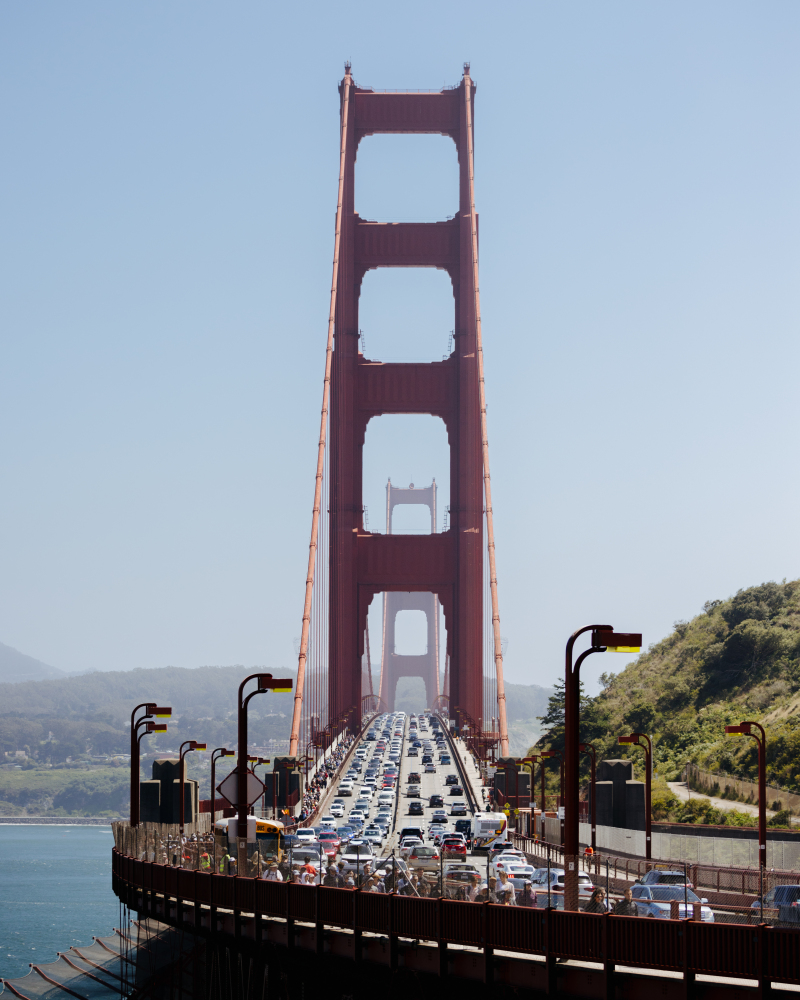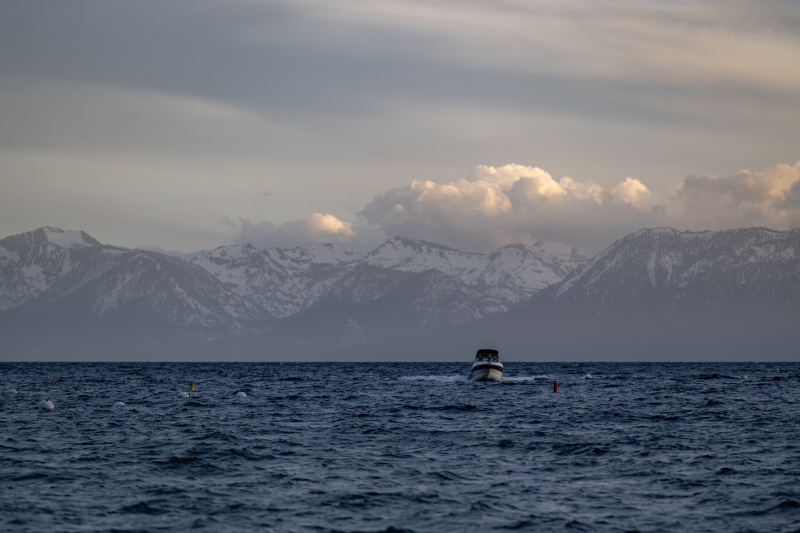
Eucharistic procession nears Indianapolis after passing both humble and iconic sites across the country
Anne-Marie Welsh and OSV News
07/15/2024

Procession as it crossed the Golden Gate Bridge
in San Francisco. Photo/Courtesy of the
National Eucharistic Congress
ERIE — The Eucharistic Christ has been carried through the streets in an historic procession emanating from four corners of the United States this summer. Along each route, tens of thousands of Americans have participated: worshipping the Lord, witnessing to their faith and experiencing grace. Among them were people from the Diocese of Erie.
“It was amazing, an awesome experience,” said Jo Feeney, a member of the Diocesan Eucharistic Adoration Committee from Warren, who traveled to New Castle, Pennsylvania, in order to take part in the procession. “I would guess there were 500-600 people at the Mass at St. Vitus,” a church of Holy Spirit Parish in the Diocese of Greensburg. Feeney estimated about half of the group then walked the one-mile route to St. Mary Church, another church of Holy Spirit Parish, where participants enjoyed a picnic lunch together. A chaplain and a group of eight “perpetual pilgrims,” young adults between the ages of 20 and 29, are accompanying each of the four routes from start to finish.
The procession traveled through the neighboring dioceses of Altoona-Johnstown, Greensburg and Pittsburgh from June 9 through the 19, with Masses, holy hours, benediction, adoration

The Pilgrimage traveled by boat across Lake Tahoe into
the Diocese of Reno, Nevada, before processing by car
for about 260 miles of the high desert in the Diocese of
Baker in Oregon. Photo/Courtesy of the National Eucharistic
Congress
and social events at more than two dozen churches, one school and one cemetery.
“The emotion that struck me most about the procession was joy — that the Holy Spirit is alive in our teenagers and young adults,” said Cindy Graham, a member of Notre Dame Parish in Hermitage, who also traveled to New Castle to take part in the event. “They are the hope that Christianity and the love of God will continue for future generations, as was displayed by their witness. Jesus Christ is using them to go out into the world and scatter the seed so the harvest will be bountiful.”
The presence of young families and their children has consistently been noted. Someone referred to all the strollers parked outside a church in Pittsburgh as "the stroller bridgade." Margaret Loria of St. Teresa of Kolkata Parish in Pittsburgh volunteered to drive her car along the route in case someone wasn't able to make it the whole way.
Any takers?
"No!" she exclaimed, "it was wonderful! It brought tears to my eyes," she said in an interview the Diocese of EriE-news and Faith magazine. "To see this many people, many not from our parish. They came from everywhere. And to see the youngsters and families. It was very moving."
The idea for the national procession was introduced considerably after the Eucharistic Revival was announced and planning for the national congress became a reality. Calling it “among the most moving, meaningful, and joy-filled experiences of my thirty-five years as a Catholic,” Tim Glemkowski, chief executive officer of the National Eucharistic Congress that will occur in Indianapolis this summer, wrote a compelling blog entry about how the procession came to be, despite the initial conclusion that such an undertaking would be impossible. Find it here: https://www.eucharisticpilgrimage.org/post/nothing-will-be-impossible-for-god.

The Eucharist processed through the
French Quarter of New Orleans June 9,
2024, as part of the St. Juan Diego Route
of the National Eucharistic Pilgrimage
through the southern United States.
(OSV News photo/Meagan Martin, courtesy
National Eucharistic Pilgrimage)
Four routes were created, stopping at historic sites and Catholic parishes and schools — some humble and known only to locals, others iconic settings in major US cities. Together, the routes are traversing the country in the shape of a cross and will meet in Indianapolis for the National Eucharistic Congress scheduled July 17-21. Although it is fairly late in the process, registration for the congress is still open. Unused blocks of hotel rooms were to be released to the public beginning July 1. With a little diligence — although, unfortunately not a small financial commitment — it is still possible to take part.
On July 15, the Diocese of Erie posted a recap of the National Eucharistic Pilgrimage on its Facebook page, offering an array of photos from some of the stops that have been made. Find it here. One moment of particular interest is from the “Boater-Cade” that accompanied the Eucharist across the Ohio River. Aboard the sternwheeler and offering blessings with the monstrance to those lined up along the river’s edge was Bishop Edward Lohse, former vicar general of the Diocese of Erie, who has recently been named administrator of the Diocese of Steubenville in addition to his role as Bishop of the Diocese of Kalamazoo. Find a short video from aboard the boat at https://www.facebook.com/dioceseofsteubenville/videos/437149535812406.
Enjoy entries from the blog created by the perpetual pilgrims in the Pilgrims’ Digest, the official National Eucharistic Pilgrimage blog. The Diocese of Erie is sending two members of the Communications Office staff to cover the National Eucharistic Congress. Be sure to watch social media beginning July 16 and watch for fuller coverage in Faith magazine and the Diocese of EriE-News.
-
